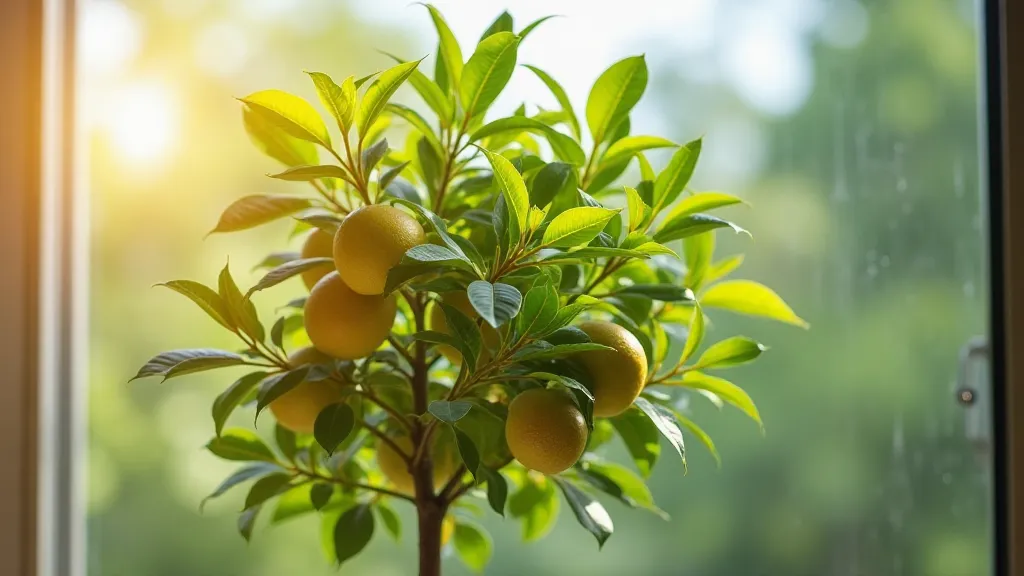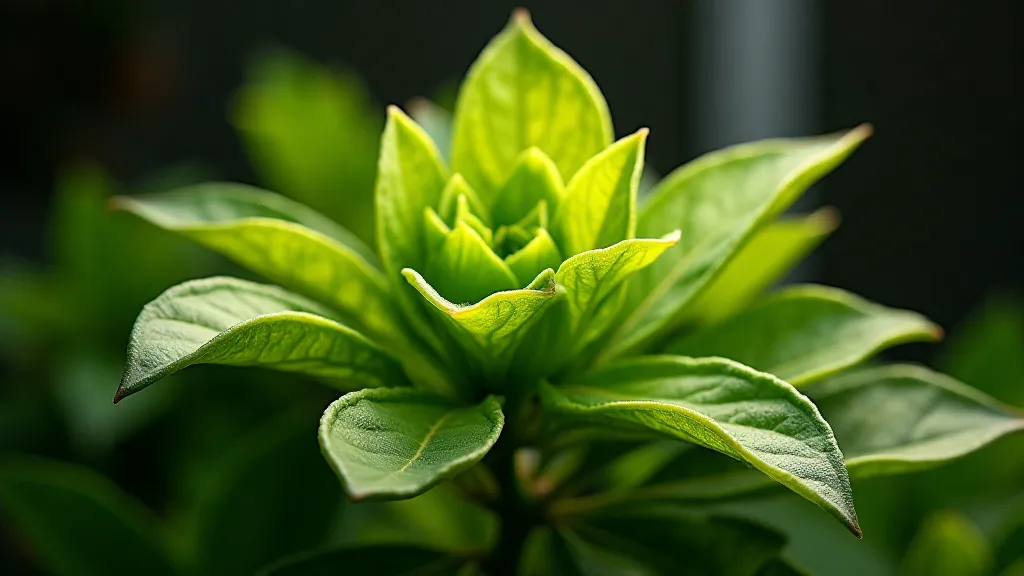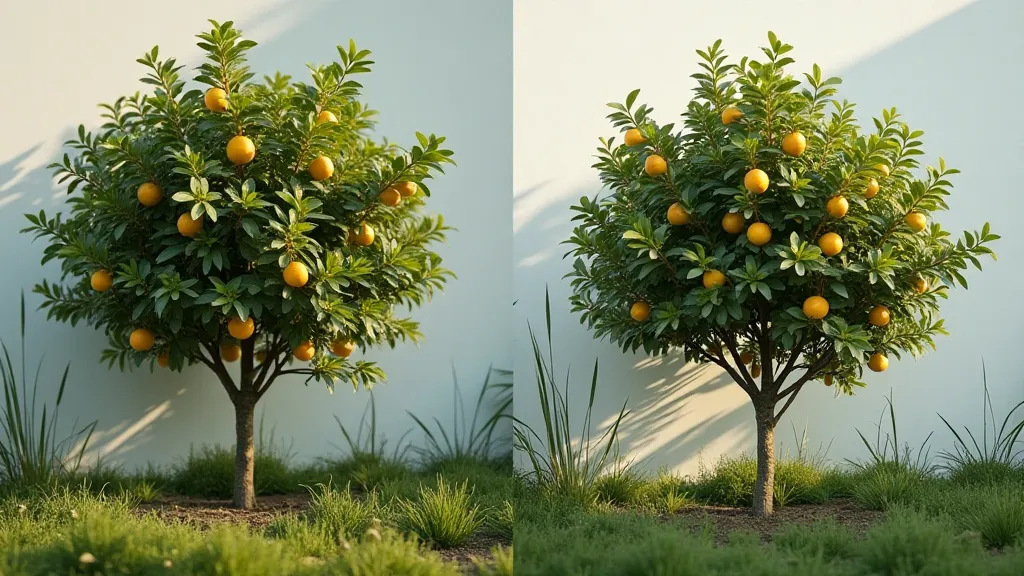Light Requirements for Thriving Indoor Dwarf Citrus Trees
Understanding the light needs of your dwarf citrus trees is essential for successful growth and fruit production. This guide explains the importance of sunlight, different types of light (direct, indirect, artificial), and how to provide optimal lighting conditions for your trees indoors. We'll also discuss signs of insufficient light and strategies for supplementing natural light. Successfully nurturing these vibrant plants involves more than just light; factors like pollination and disease prevention also play crucial roles in their overall health and productivity.
The Vital Role of Light
Citrus trees, naturally hailing from sunny climates, require significant light to thrive. Light isn't just about aesthetics; it's the engine that drives photosynthesis, the process by which trees convert light into energy for growth and fruit production. Without adequate light, your dwarf citrus tree will struggle to grow, produce flowers, and ultimately, bear fruit. A healthy tree needs at least 6-8 hours of strong light daily. While providing the right light is key, it's also important to consider factors like pollination to ensure fruit development - a topic we're sure many new growers are interested in, and which can be explored further in our guide to pollination secrets for indoor citrus trees.

Direct vs. Indirect Sunlight: What's the Difference?
Knowing the distinction between direct and indirect sunlight is crucial for placement. Direct sunlight is unfiltered light that comes straight from the sun. While beneficial, too much direct sunlight, especially during the hottest part of the day, can scorch leaves, particularly in hotter climates or through windows with insufficient UV protection. Indirect sunlight is sunlight that has been diffused or filtered, like through a sheer curtain or shaded by another object. This is often a safer option for delicate leaves. Successfully navigating these nuances is also important to ensure that the overall health and vitality of your tree isn’t compromised, and that you avoid potential issues such as pests and diseases which can quickly arise from stressed or compromised plants.
Ideal Light Conditions for Dwarf Citrus
Ideally, your dwarf citrus tree should receive at least 6 hours of sunlight daily. Here’s a breakdown of optimal placement:
- South-facing windows: Provide the most intense light and are generally best. Rotate your tree regularly to ensure even growth.
- East-facing windows: Provide bright morning light, which is gentler than afternoon sun.
- West-facing windows: Provide intense afternoon sun, so monitor for leaf scorching.
- North-facing windows: Generally provide insufficient light for citrus trees.
Supplementing Natural Light: When Artificial Light is Necessary
If you don't have access to sufficient natural light, don't despair! Artificial lighting can be a lifesaver. LED grow lights are a popular choice because they're energy-efficient and produce the necessary wavelengths for plant growth. Focus on "full-spectrum" LEDs to mimic natural sunlight. Position the light source approximately 12-18 inches above the foliage, and provide 12-16 hours of light daily. Choosing the right variety of dwarf citrus is also a critical factor; some varieties are simply better suited for indoor growing than others. You can explore a wide range of options and find the perfect fit for your space in our guide to choosing the right dwarf citrus: lemons, limes, oranges & more.

Recognizing Signs of Insufficient Light
Your dwarf citrus tree will often give you clues if it's not getting enough light:
- Leggy growth: Long, stretched-out stems with sparse leaves.
- Small leaves: Leaves that are noticeably smaller than they should be.
- Lack of flowering and fruiting: Your tree simply won't produce flowers or fruit.
- Pale green leaves: A sign of chlorophyll deficiency due to lack of photosynthesis.
- Leaning towards the light source: The tree will visibly bend towards windows or grow lights.
Maintaining a Healthy Environment: Beyond Light
While light is paramount, remember that a flourishing dwarf citrus tree thrives in a holistic environment. Proper watering, well-draining soil, and appropriate fertilization are all essential components. Furthermore, vigilance against common pests and diseases is crucial for preventing long-term damage. A healthy tree is a resilient tree, and understanding how to spot and address potential problems early on can save you a great deal of heartache. Our guide to dealing with pests & diseases on indoor citrus offers comprehensive strategies for maintaining a vibrant and thriving plant.
Tips for Success
- Rotate your tree: Rotate your dwarf citrus tree regularly (every few weeks) to ensure even light exposure and prevent it from growing lopsided.
- Clean the leaves: Dust accumulation on leaves can block light penetration. Gently wipe the leaves with a damp cloth periodically.
- Adjust light intensity: If you notice signs of leaf burn (scorched edges), reduce the intensity of the light or move the tree further away from the light source.
- Monitor your tree: Regularly observe your tree's growth and adjust lighting as needed.
- Pruning for Optimal Growth: Regular pruning isn't just about aesthetics; it encourages branching, improves air circulation, and allows more light to penetrate the inner foliage. Proper pruning techniques contribute to overall health and productivity.
- Humidity Matters: While not as critical as light, maintaining adequate humidity can benefit your dwarf citrus. Consider using a humidifier or placing the tree near a tray of water to increase humidity levels, especially in drier climates.
- Repotting as Needed: As your dwarf citrus tree grows, it will eventually need to be repotted into a larger container. Choose a pot with adequate drainage holes and use a well-draining potting mix formulated for citrus trees.
- Enjoying the Fruits of Your Labor: Once your dwarf citrus tree begins to bear fruit, be sure to harvest and enjoy the delicious rewards of your efforts. Learning how to properly harvest and enjoy your homegrown citrus is the final step in the process - a topic we delve deeper into in our guide to harvesting & enjoying your homegrown citrus.

By understanding the light requirements of your dwarf citrus trees and implementing these strategies, you can provide them with the conditions they need to thrive and reward you with beautiful foliage and delicious fruit! Remember that cultivating a thriving dwarf citrus tree is a journey of learning and observation. Pay close attention to your tree’s signals, and adjust your care accordingly. With a little effort and a lot of love, you can enjoy the beauty and bounty of your own miniature citrus grove.





